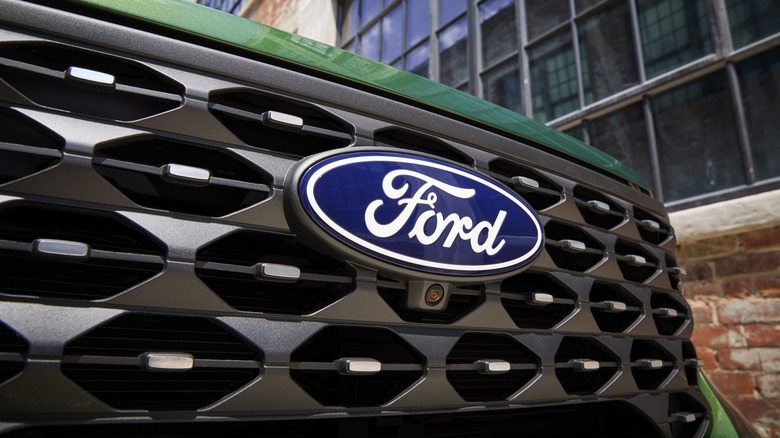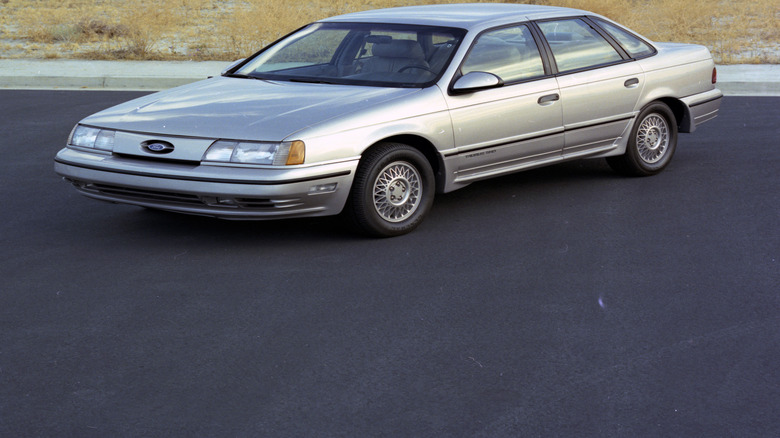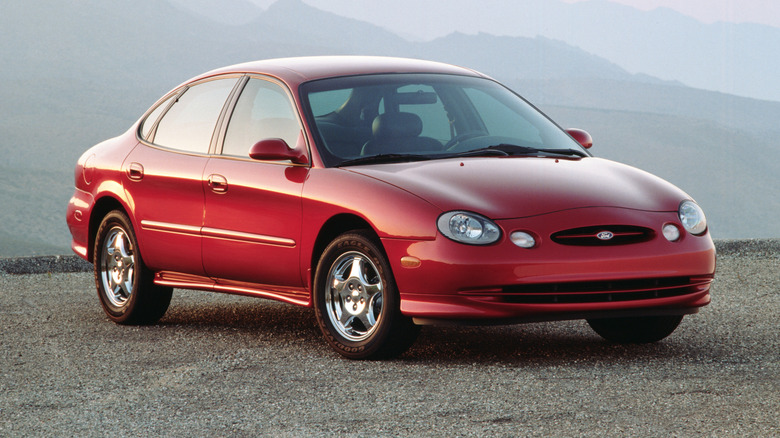What Was The First Ford Model Powered By An EcoBoost Engine & How Fast Did It Go?
Downsized, turbocharged, and direct injection engines have become a big part of the modern car industry in the wake of ever stricter fuel efficiency laws, and the EcoBoost engine is Ford's own way of supporting the trend, while also cutting its carbon footprint. The original EcoBoost engine, a 3.5-liter V6 supplemented with twin Garrett GT1549L turbochargers, was first introduced in the Ford Taurus SHO in 2009. The two turbochargers push 11 psi of boost, and with that, the engine generates 365 hp and 350 lb-ft of torque.
The powertrain is mated to an all-wheel drive system and a six-speed automatic transmission. Not surprisingly, the performance of the EcoBoost-powered Ford Taurus SHO is respectable, with the sprint from zero to 60 mph taking 5.2 seconds, according to a Car and Driver test, while the top speed is limited to 133 mph. Then, there's the fuel economy, which is not bad for a high-performance car. In EPA's testing, the 2010 Ford Taurus SHO achieved 17 mpg in the city, 25 mpg on the highway, and 20 mpg in mixed city and highway use. For context, the naturally-aspirated 3.5-liter Duratec V6 engine found in the standard 2010 Ford Taurus model averages between 21 and 22 mpg combined.
Aside from the Taurus SHO, the Blue Oval's 3.5-liter EcoBoost V6 has powered a broad array of Ford and Lincoln models. These include the Lincoln MKS, Lincoln MKT, Ford Explorer Sport, Ford Police Interceptor Sedan, and many more.
What kind of car was the Ford Taurus SHO and what other engines powered it?
The Ford Taurus SHO was a four-door sports sedan. SHO stands for Super High Output, and the first generation was introduced in 1989 as a high-performance variant of the Ford Taurus sedan. It originally featured a Yamaha-designed and built 3.0-liter V6 engine producing 220 horsepower and 200 lb-ft of torque. With that, a test by Car and Driver showed that it does 0-60 mph in 6.7 seconds, achieves a 15.1-second quarter mile, and tops out at 143 mph.
At first, the only transmission available to buyers was a 5-speed manual sourced from Mazda. However, for its second generation, which spanned from 1992 to 1995, Ford introduced a four-speed automatic transmission and increased the volume displaced by the engines connected to the automatic transmission to 3.2 liters starting in 1993. Despite the upswing in displacement, the power of the 3.2-liter V6 engine remained unchanged at 220 hp, but torque output was raised to 215 lb-ft.
Apparently, the Blue Oval deliberately used less aggressive intake camshafts on the automatic-equipped V6 engines to give a power rating that is the same as that of the 3.0-liter V6, despite a slight boost in displacement. In performance testing, automatic-equipped second-generation Taurus SHO models raced from 0-60 mph in 7.5 seconds, while the quarter mile run took 15.4 seconds, per MotorTrend. Fast forward to the 1996 model year, and the third generation SHO was launched with a new 60-degree 3.4-liter V8 generating 235 hp and 230 lb-ft, marking the first time a V8 was used on the performance sedan. In a MotorTrend performance evaluation, the V8, developed in collaboration with Yamaha, was able to propel the SHO to 60 mph in 7.5 seconds.
Why did Ford discontinue the Taurus SHO?
Ford previously discontinued the Taurus SHO on two occasions. The first was in 1999 when, after 10 years of production over three separate generations, the Blue Oval decided to take the performance sedan off sale due to weaker than expected demand. Despite being the only Ford Taurus SHO generation to feature a V8 engine, the third-gen car wasn't universally well-received as a sporty sedan, in part because it only offered a modest power hike over the V6 engines and lacked a manual transmission, which some purists felt hampered driver involvement. The V8-powered SHO was also often criticized for its oval styling and, eventually, camshaft sprocket failure. These issues had meant that sales of Taurus SHO were slow, and consequently, Ford had to hit pause on production.
After ten long years, the SHO was revived in 2009, ahead of the 2010 model year. The new fourth-gen car was notably larger than its predecessors and gave consumers a standard all-wheel drive system, as opposed to the front-drive configuration found on its forebears. It also became the most powerful SHO ever, thanks to the aforementioned 3.5-liter EcoBoost V6, which it continued to use right up until production ended again in 2019.
The difference this time around was that the SHO was retired alongside all other Taurus models and Ford's other regular cars as part of the effort to focus on trucks and SUVs starting in 2020. Currently, nearly all new Ford models come in truck, van, and SUV body styles, with the regular Mustang and supercar-slaying Mustang GTD being the only regular cars on offer.


